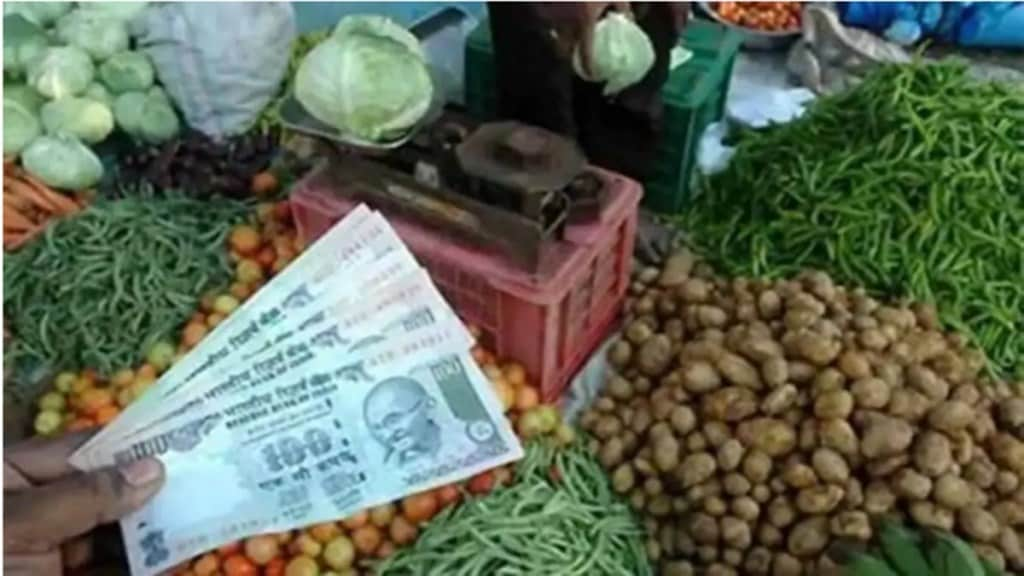Wholesale price inflation hit a 24-month low of 4.73% in January this year, aided by a favourable base effect and moderation in prices of manufactured products and fuel and power although a number of food items became more expensive. However, with wholesale inflation easing for the eighth consecutive month, the expectation of a similar cooling in retail inflation has also been bolstered, despite an uptick in January.
Retail inflation rose to a three-month high of 6.52% last month increasing the chances of the Reserve Bank of India going for a further hike in repo rate in its next policy in April. The repo rate is now 6.5%, thanks to sixth rounds of rate increases by the MPC-RBI which is keen to bring inflation under control and align it with the medium-term target of 4+/-2%.
With wholesale price index registering further moderation, it is expected that retail inflation too would ease, though with a lag. The data also suggests that the pass-through of higher input costs to finished product prices is either almost over or nearing completion.
The RBI projected retail inflation to moderate to 5.3% for FY24 .
WPI inflation was at 4.95% in December 2022 and was at 13.68% in January 2022. It had hit a peak of 16.63% in May last year. Analysts expect it to further ease to less than 4% in February due to a favourable base effect as well as lowering commodity prices in global markets.
Rajani Sinha, chief economist, CareEdge said WPI inflation is expected to continue on the downward trend till first quarter of the next fiscal provided there are no unpleasant surprises relating to global commodity prices. “For FY24, we expect WPI inflation to average around 3%, lower than the estimated 9.3% for FY23. The critical aspect would be to watch out for risk of resurgence in commodity prices on the back of increased demand from China or any further global supply bottlenecks,” she said.
Sunil Sinha, principal economist, India Ratings and Research expects the wholesale inflation to cool off further to 3.7% in February 2023 due to the high base effect and softening of global commodity prices. “However, prices in January 2023 were 0.2% higher than a month-ago, after a gap of six months (on a seasonally adjusted basis),” he noted.
The concern, however, is the rise in wholesale inflation in food articles, which rose to 2.38% in January from a deflation of 1.25% in December. Vegetables and onions continued to register deflation at 26.48% and 25.2% respectively, although it was lower than December. Barring potato and egg, meat and fish all other items registered higher wholesale inflation in January. Of particular concern, were cereals and wheat with double digit wholesale inflation of 15.46% and 23.63% in January from 14% and 20.72% respectively in December.
“The inflation of foodgrains led by cereals jumped to a 77-month high of 13.0% in January 2023 from 11.6% month-ago. Within cereals, except ragi and paddy, all the other sub-heads have been witnessing a sustained double-digit inflation now for eight months,” Sinha of India Ratings noted.
Given the elevated prices of wheat and atta despite the offloading of wheat stocks via the open market sale scheme (OMSS) in early-February 2023, the Centre recently decided to exclude the transportation cost component from the reserve price for auction. “This is likely to ease upside pressures to some extent in the coming weeks. A high base and the downtrend in wholesale prices of most essential commodities in early part of the month are likely to slightly soften the year on year food inflation in February 2023,” said Aditi Nayar, chief economist, ICRA.
Also read: Dak Ghar Niryat Kendras will boost small traders to push country’s exports: DoP Secy Vineet Pandey
Significantly, core WPI inflation declined to a 27-month low of 2.8% in January 2023 from 3.2% in December 2022. Further, 14 of the 21 sub-groups of the core -WPI (which have a weight of 40.2% in the basket) registered a moderation in the year on year inflation last month. It is expected to decelerate further in February. In contrast, core inflation has remained elevated at over 6% at the retail level last month with expectations that it will continue to remain high.
Manufactured items, which has a 64.2% weight in the WPI basket, registered an easing in wholesale inflation in January to 2.99% from 3.37% in December. Inflation in fuel and power also declined to 15.15% in January from 18.09% in December due to an easing in inflation of heads such as petrol, diesel and air turbine fuel. However, they continue to be at elevated levels.
The final WPI inflation for November 2022 was revised upwards to 6.1% from the initial 5.8%.
Consumer Price Index (CPI) inflation jumped sharply in January to 6.52% on year from 5.72% in December. The acceleration was driven largely by a rise in cereals, protein-based items and items like personal care and effects. Sticky core inflation continues to pose challenges from the demand side, Crisil noted, while maintaining its CPI inflation forecast for fiscal 2023 at 6.8%.


